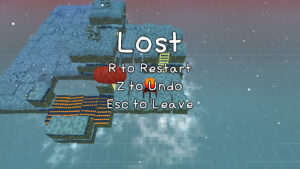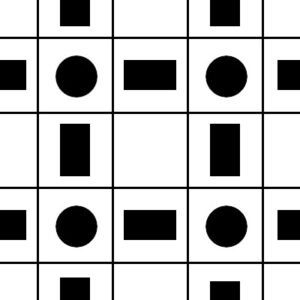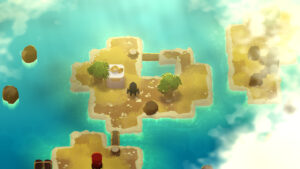Why I Haven’t Been Reviewing Comp Games This Year
Today is the end of the judging period of the 27th annual IF Comp. I have not been posting about it. What’s up with that?
Last year, after playing over a hundred entries, I said that I’d probably skip the Comp if it kept growing at the rate it had been. By September, I even had an alternative in mind, for people who want IF reviews: earlier in the year, the talented and prolific IF author Ryan Veeder announced “club wooby“, a metagame, rewards program, and attention-getting scheme where you earn “buttons” by playing and producing transcripts of his games, and trade them in for Veeder-branded tchotchkes and/or one-of-a-kind handmade felt dinosaur dolls. Although I ignored this at first, dedicating a month to it seemed like a good Comp substitute. I may still do that at some point.
As it turned out, the Comp didn’t grow this year: there were only about 70 entries, a number I would have considered huge a few years ago but which now seems modest and manageable. Aim at playing two a day and you’d easily get through them all within the deadline. So I had a choice to make — or I would have, if I hadn’t suffered a fairly severe wrist injury at the end of September that prevented me from typing or using a mouse with my dominant hand. Playing any form of IF, let alone writing reviews, became too difficult to consider.
I still haven’t fully recovered. Obviously I’m typing now (with both hands, even!), but my capacity for using a mouse right-handed is limited. This has hampered my ability ability to play games, but not eliminated it. I just have to be selective.
One thing I’ve been playing a lot, if you can call it “playing”, is the seminal idle game Cookie Clicker: I’ve made a few goes at it in the past, but its recent Steam release put it back on my radar, and it’s gotten a significant amount of new content since the last time I paid attention to it. The title of the game is a bit misleading: it is not, for the most part, about rapidly clicking on things, and never requires it. Mostly it’s about waiting to afford upgrades to your passive income. It can be played in a more active style, where you’re waiting to click on randomly-appearing “golden cookies” that only last a short time, or it can be played more passively — there are mechanics that reward choosing one play style or the other and sticking to it. And passive mode is basically perfect for satisfying one’s craving for numbers-go-up while other games are unplayable.
I also got back into A Monster’s Expedition, which has the virtue that it can be played perfectly adequately with just the left hand, requiring nothing more than WASD plus Z for undo and R for reset. I had already reached the ending, but I hadn’t found my way to all the optional islands, and in addition, there was an update that added even more islands. This was a little consternating, as I had no way to differentiate the new content from the old-but-unsolved. It’s all just mixed together in the same map. Now, I posted before about how the retreat of the clouds aids completion, showing exactly where the remaining islands are. The new content makes this less of an issue: islands are basically everywhere! I’ve actually found it easier to start over from scratch, carving the cloud cover out of only the immediate vicinity of where I’ve been, as this makes it easier to see which unvisited islands are close enough to bear consideration. Possibly re-solving everything has helped me relearn how the game works, too. Whatever the case, I got severely stuck when just trying to continue from my old save, and have easily outpaced it from the new.
To some extent, I’ve been able to use a controller: unlike keyboards and mice, you essentially operate controllers with your wrists in a fixed pose. In this way, I’ve managed to play most of Teslagrad, a rather good puzzle-oriented Metroidvania themed around magnetism in a Russian-ish steampunky setting. However, as your range of actions increases over the course of the game, eventually it gets to the point where you’re using chords of face buttons and shoulder buttons that would probably be a little awkward even when they’re not actively painful. I want to finish it at some point, but it’ll have to wait until I get my grip strength back.
At any rate, I’m getting better. In fact, over the last two weeks, I managed to do a two-part stream of Return of the Obra Dinn, a game that I had completed before, but which I wanted to solve better. The whole game is about figuring out the grisly fates of the crew of an abandoned Regency-era sailing vessel, using observation and deduction. The game has a way of letting you know you when you have enough information to know someone’s identity, and I wanted to see if I could find the necessary reasoning as soon as the game thought it was possible. (I mostly succeeded, but not entirely.) You can still see the recordings on Twitch if you’re interested. Anyway, this is a first-person game, controlled via mouse and keyboard, and I realized after the first stream that it had been a bad idea: even in a sedate non-action game where you can spend a lot of time standing still and going over your notes, and even using the mouse left-handed where I could, my hand was wrecked by the end. I went ahead with the second stream anyway, hoping that an extra week of healing would make it better, but I’m not doing it again soon.
 Comments(1)
Comments(1)

